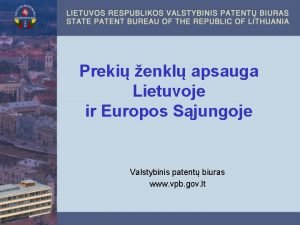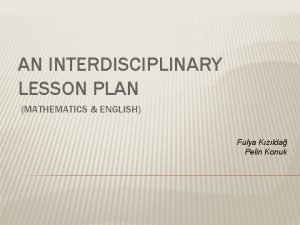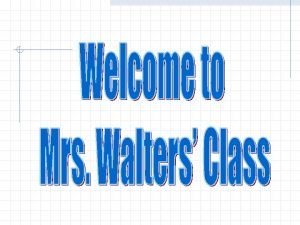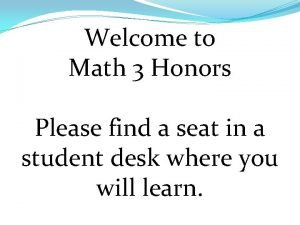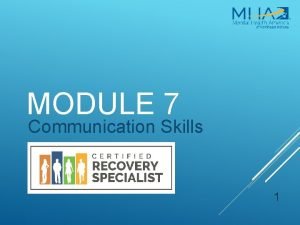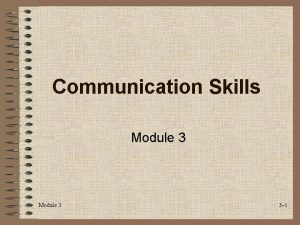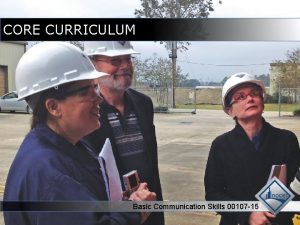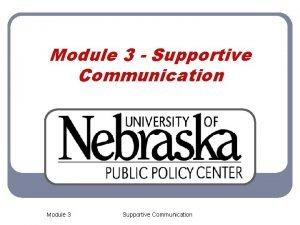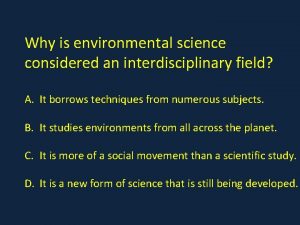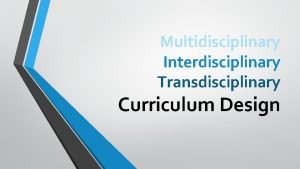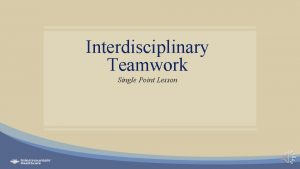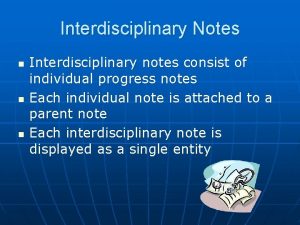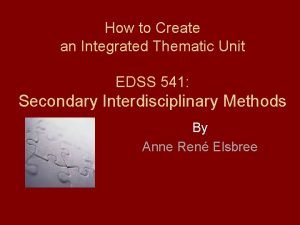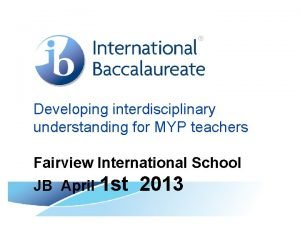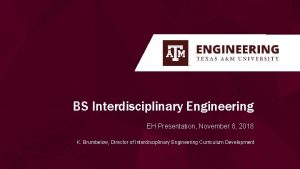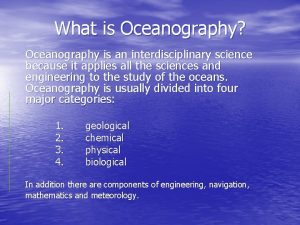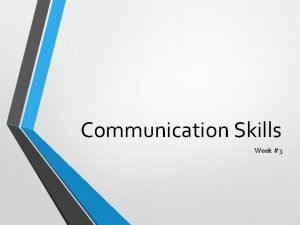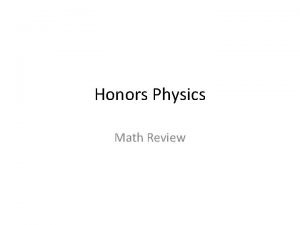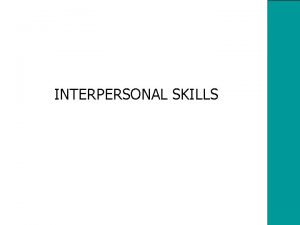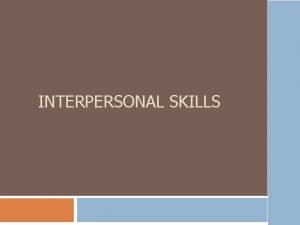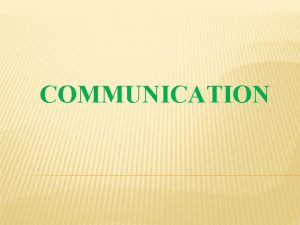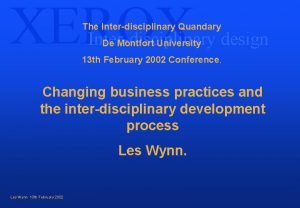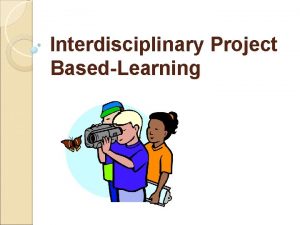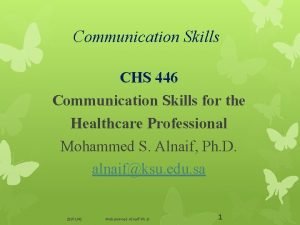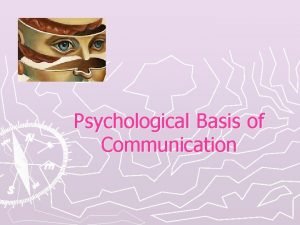Interdisciplinary Math communication skills Honors module Dr Nicos




















- Slides: 20

Interdisciplinary Math communication skills Honors module Dr. Nicos Starreveld

Program for today • Intended Learning Objectives • Review of the material about the poster o Intended learning objectives o The poster • The article o Intended learning outcomes o Structuring the article and the SCQA method • • Pauze Assignment on SCQA - Pauze Writing the article Homework assignments 10 minutes 15 minutes 20 minutes 15 minutes 45 minutes – 15 minutes 30 minutes 15 minutes

Intended learning objectives • Gain experience in working in an interdisciplinary team and in doing interdisciplinary research. • Apply mathematics on a problem from a different discipline. • Explain how the terminology used in mathematics and the terminology used in other sciences relate to each other. • Explain your research and results, written or orally, to a broader audience. • Determine the structure and the content of a poster/article that is suitable for a given target audience.

Intended learning objectives of this training • Gain experience in working in an interdisciplinary team and in doing interdisciplinary research. • Apply mathematics on a problem from a different discipline. • Explain how the terminology used in mathematics and the terminology used in other sciences relate to each other. • Explain your research and results, written or orally, to a broader audience. • Determine the structure and the content of a poster/article that is suitable for a given target audience.

Part I - Recap from the poster at the NMC • Intended learning objective Explain how the terminology used in mathematics and the terminology used in other sciences relate to each other. • People from different disciplines don’t always use the same terminology. For example: üConfiguration model < - > uniform graph with fixed degrees; üPhase transition < - > gelation point; ü Giant component < - > polymer.

Recap from the poster at the NMC In order to explain interdisciplinary research it is important to take this under consideration. Second intended learning objective Determine the structure and the content of a poster that is suitable for a given target audience. After having a clear view on the intended target group it is important to agree on a suitable structure for the poster.

Recap from the poster at the NMC

Part II - Article • In this session we will focus on the following learning objectives üExplain how the terminology used in mathematics and the terminology used in other sciences relate to each other. (covered) üDetermine the structure and the content of an article that is suitable for a given target audience. üExplain your research and results, written to a broader audience.

Article – Structure Determine the structure and the content of an article that is suitable for a given target audience. Ø We will learn how to use the SCQA method to structure and article. Ø As a exercise we will have a look at some written articles. Ø As a second exercise will have a look at a TED Talk. Ø Take home assignment on SCQA.

The SCQA method People need structure to process information If you don’t present that structure -> people will make their own structure Ø This may lead to misinterpretation or losing the focus. The SCQA method is a tool to define the elements of your story structure. It originates from the Pyramid method (see references at the end).

The SCQA method • S • C • Q • A Situation Acts as a starting point. You present facts and information that is broadly acceptable. Complication Acts as a motivation. You present the complications, problems and opportunities that arise from the situation. Question Formulate the main questions. Here you make concrete questions that arise from the complication about how these can be resolved. Answer Main message of the article. You give the answers to the questions posed.

The SCQA method - Example • S • C • Q • A Situation A country in the EU is unable to repay its debts. Complication European economies are connected to other economies in the Euro zone. This implies that this country would default other countries may also follow. Question How can the EU make sure that this country will not default while staying in the Euro zone? Answer Ø Possible answer: Erase this country’s debt. Ø Possible answer: Remove this country from the Euro zone. Ø Possible answer: Some other viable plan.

Assignment – SCQA and articles • Take one of the following three articles and divide it in parts. o o Which part corresponds to Situation? Which part corresponds to Complication? Which are the Questions? Which are the given Answers? • Articles: o How to plan Valentine’s day using a matching algorithm o Drug dumping in the Netherlands; a gentle introduction to uncertainty and statistics. o How the popular become even more popular

The SCQA method • S Situation • C Complication • Q Question • A Answer Your message!

Assignment – SCQA and talks Identify the SCQA in the following TED talk Ionica Smeets, The danger of mixing up causality and correlation. https: //www. youtube. com/watch? v=8 B 27 1 L 3 Nt. Aw

References • The material on the SCQA method was developed from N. Starreveld based on a training provided by Analytic Story Telling. • The Pyramid Principle: Logic in Writing and Thinking (The pyramid principle), book written by Barbara Minto.

Writing the article We will now focus on the last learning objective Explain your research and results, written or orally, to a broader audience. We have talked about structuring the article using the SCQA method. Now we will focus on writing the actual article.

Writing the article - Assignment Identify in the following five short articles two things you like and two things you don’t like. o Hilbert's Nullstellensatz o De homogeniteit van de Hilbertkubus o Large Deviations of Triangle Counts on Erdös-Rényi Random Graphs o Neurale netwerken o Spectrale grafentheorie

Writing the article In order to write the article we will chose a point to focus on Our focus point is Is the general line of the story comprehensible from the beginning until the end? Does the reader get an answer on the moment he/she poses a question? And we will start practicing with writing

Homework Assignments • Fill in the SCQA form for your article (deadline 24 April) • Write a first version of the article based on the SCQA method (deadline 22 May) • In writing the article use the following two writing tips: 1. Write in paragraphs. Each paragraph is a conceptually independent unit. 2. Chose a clear structure for the article (see SCQA assignment).
 Nicos s kyriakides
Nicos s kyriakides Nicos klasifikacija
Nicos klasifikacija Interdisciplinary math lesson plans
Interdisciplinary math lesson plans Honors math 3
Honors math 3 Math 3 honors
Math 3 honors This module will focus on communication skills at work
This module will focus on communication skills at work Module 3 communication/interpersonal skills
Module 3 communication/interpersonal skills Module 00107-15 exam basic communication skills answers
Module 00107-15 exam basic communication skills answers Module 7 basic communication skills
Module 7 basic communication skills Supportive verbal communication
Supportive verbal communication C device module module 1
C device module module 1 A science is considered interdisciplinary when weegy
A science is considered interdisciplinary when weegy Multidisciplinary vs interdisciplinary
Multidisciplinary vs interdisciplinary Transdisciplinary vs interdisciplinary
Transdisciplinary vs interdisciplinary Single point lesson
Single point lesson Interdisciplinary notes
Interdisciplinary notes Components in designing integrated thematic units
Components in designing integrated thematic units What is interdisciplinary
What is interdisciplinary Interdisciplinary studies ucf
Interdisciplinary studies ucf Interdisciplinary engineering tamu
Interdisciplinary engineering tamu Is oceanography an interdisciplinary science
Is oceanography an interdisciplinary science

